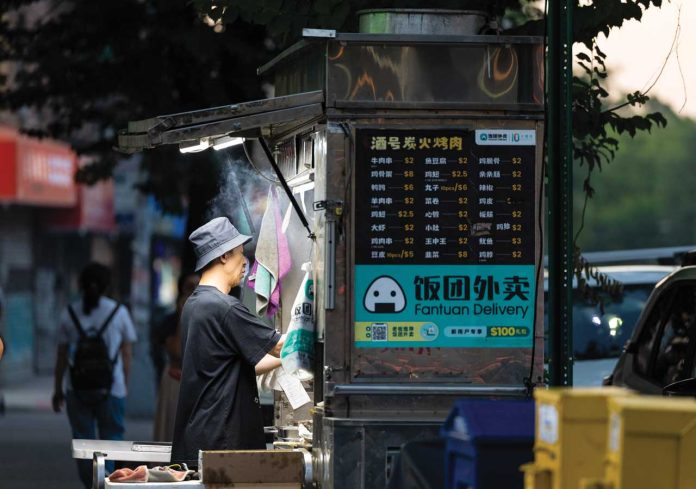There’s mala in the air. Anywhere from a tickle to a burn, the spice blend made with Sichuan peppercorns and chilies suffuses the sidewalks of Flushing, Queens. And that’s not the only enticing aroma that will grab any visitor who treads the streets of one of the busiest parts of New York City.
A journey to Flushing is the closest enthusiasts of regional Chinese food may get to the motherland without a long-haul flight. From the nose-tingling piquancy of northeastern-style fermented cabbage to the sugary scents of boba shops selling rainbows of sweet tea, there’s something to represent nearly every region and taste.
Amtrak trains take about 3½ hours to travel from D.C.’s Union Station to Penn Station in Manhattan. From there, find the Long Island Rail Road listings for the next train to Flushing-Main Street in Queens. During the 20-minute interborough ride, the underground gives way to a vibrant succession of neighborhoods, including Little Tibet. Upon arrival in Flushing, the elevator down from the platform puts you in the heart of busy Chinatown.
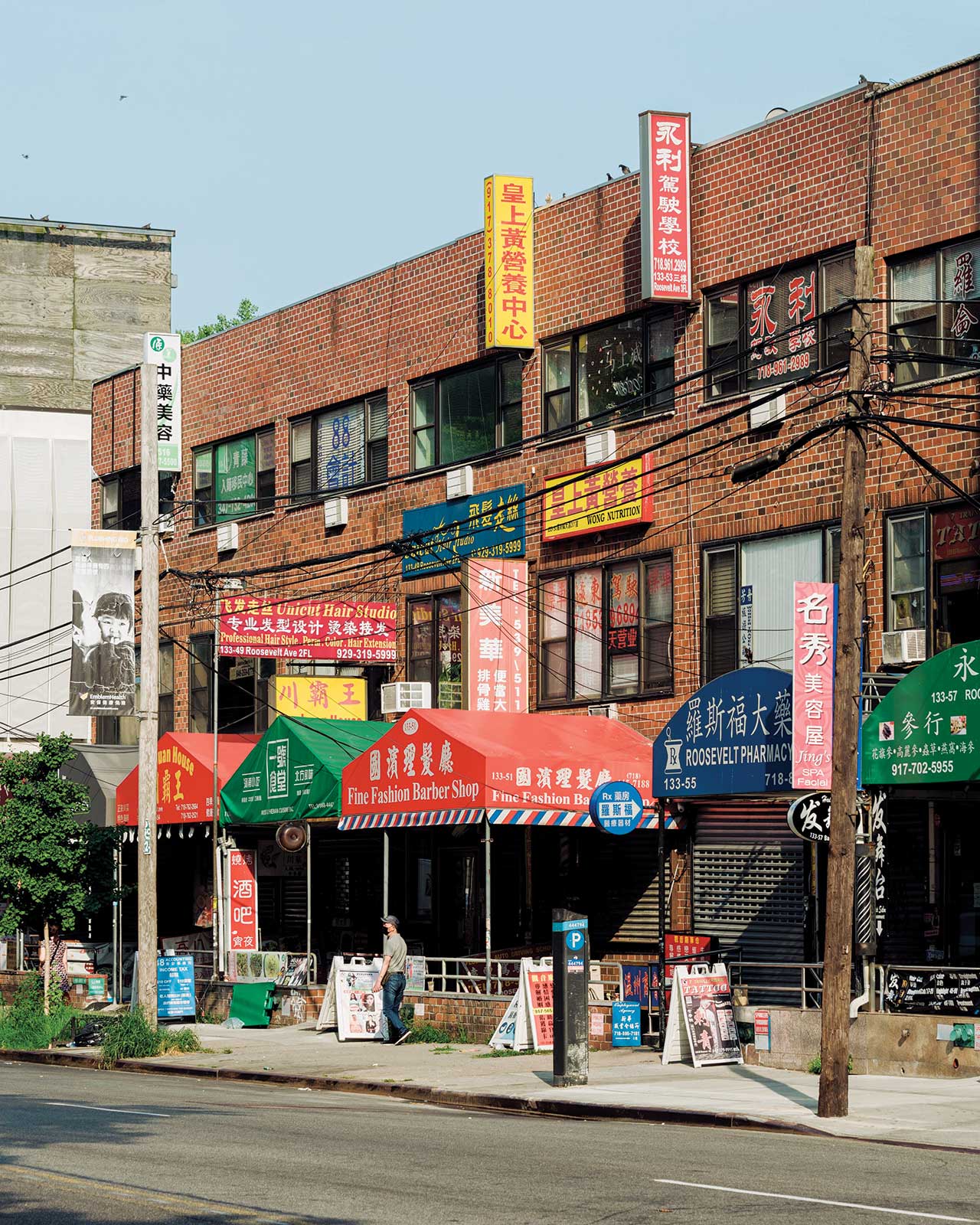
Queens in general and Flushing in particular have long been destinations for global diversity. Flushing Meadows Corona Park was the site of two World’s Fairs, in 1939 and 1964. Comic actress Awkwafina (aka Nora Lum) has deep roots here, adds Rob MacKay, director of the Queens Tourism Council and deputy executive director, community, for the Queens Economic Development Corp. Her great-grandfather opened Lum’s, which was purportedly the very first Chinese restaurant to take root in Flushing.
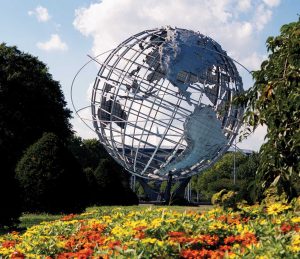
That was in the 1950s. By the time Lum’s closed in the 1980s, some 60,000 Chinese immigrants lived in the neighborhood, according to the Flushing Chinese Business Association. MacKay posits that the influx may have begun with the second World’s Fair. “There’s also the philosophy that it’s between two airports,” he says.
Either way, Flushing’s Chinatown is considered by many to have eclipsed the one in Manhattan in both size and quality. It’s not unusual for a visitor to encounter businesses where the signage, menus and spoken language include little or no English.
My first stop is just such a place. I’m in the market for hand-pulled noodles and a rou jia mo sandwich from central China’s Henan province. He Nan Mian Guan has the goods.
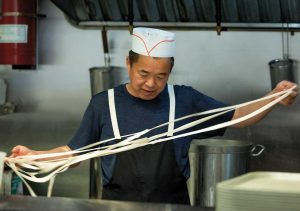
Each member of the family behind the counter works small balls of dough into what look like cats’ cradles of yarn before a brief trip into boiling water. From there, the wide strands are combined with a soy-based sauce, plus onions, bok choy, and sliced lamb or beef. At the table, I add house chili paste and black vinegar to make the dish even more irresistible.
Even better? The rou jia mo, a burger-like handheld with origins in pre-Christian Shaanxi. This popular street food has since made its way all over China, and the juicy pork version at He Nan Mian Guan is a standout.
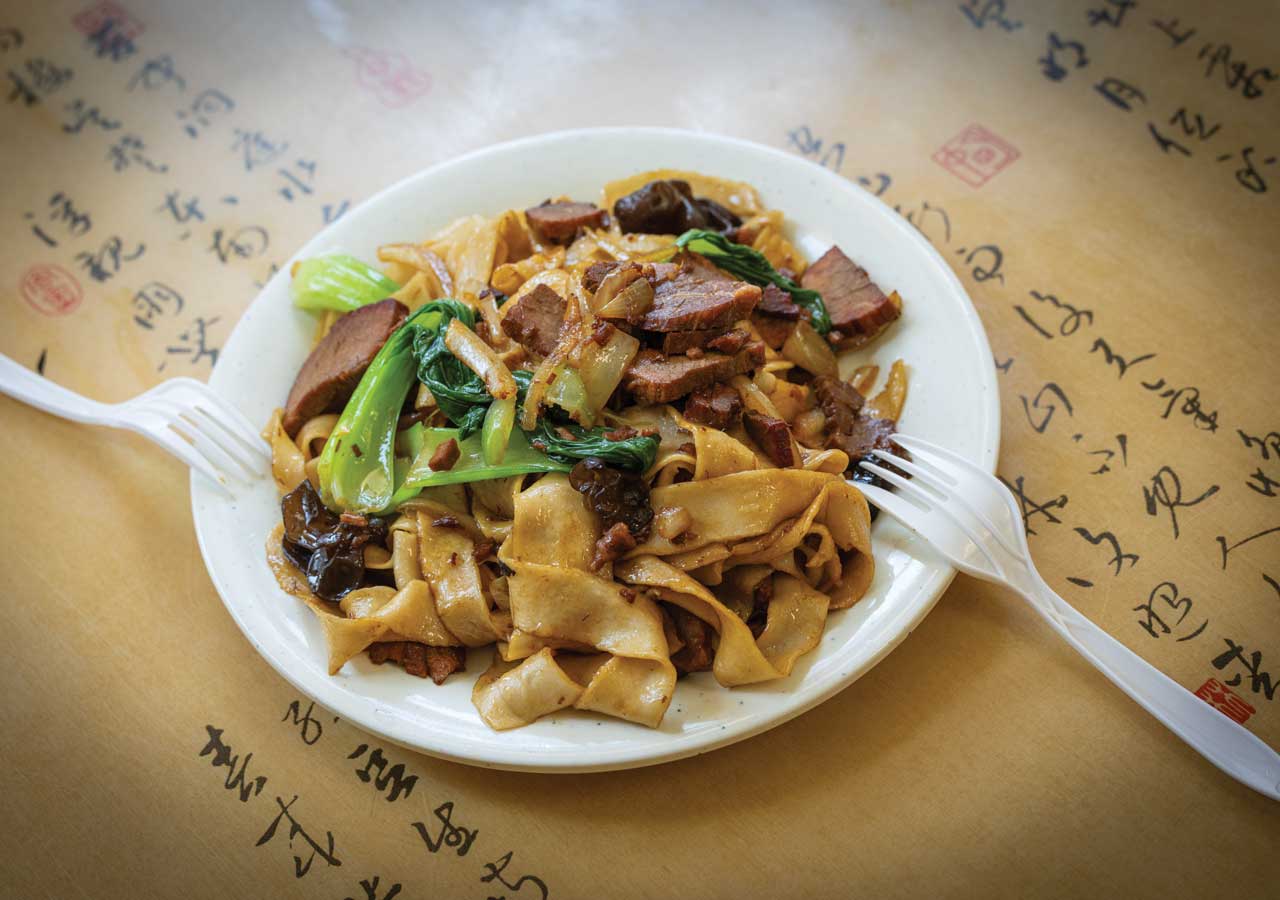
The total bill, including two drinks, comes to $20. The restaurant is technically cash only, but through pointing and gesturing with the youngest family members, I figure out a way to pay with Zelle.
My lodging is a few quick blocks away, and as its name suggests, the Asiatic Hotel caters to visitors from the largest continent. A sign at the front desk warns in both characters and letters, “Durian cannot be brought into hotel. $250 cleanup fee will be charged.”
Such signs are a common sight in Asia, where the fruit, which smells like a mix of melon and motor oil, is often banned from public transport and anywhere else it might offend.
The room is large by New York City standards, with light varnished woods that create a pleasant austerity. At less than $150 per night, I consider it a steal, especially given its location on a relatively quiet street that’s still just steps from the action.
My dinner destination, Jiu Hao, is a 10-minute walk. Out front, a gentleman grills skewers, the charcoal of his stand smoking as he sells a few sticks of lamb to passersby, but most of his yield goes inside. Once I’m seated in a booth, ordering is easy, thanks to a tablet complete with pictures.
Jiu Hao specializes in tabletop barbecue in the style that’s served in Dongbei, the chilly northeastern region of China that touches Russia and North Korea. The overlap with Korean barbecue is clear as soon as the small plates (called banchan in Korean restaurants) come out. Instead of kimchi, the spread here includes spiced peanuts, potato salad topped with colorful sugar sprinkles, cilantro-dotted spicy bean sprouts, and pickled radish. The icy winters of Dongbei must feel a little warmer thanks to restaurants like this one, where servers grill dishes such as live eel over blazing charcoal.
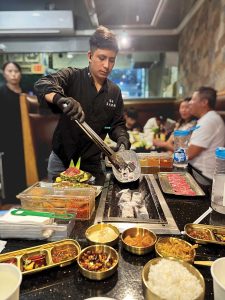
The highlight for me is an ultra-tender, garlicky-marinated beef served in half a pineapple. Though the dish is packed with flavor on its own, the cumin-chili powder spice blends on the table add several more dimensions. I toss some onto the complimentary watermelon for a savory and sweet bite at meal’s end.
Whatever the weather in Queens, it’s always worth heading indoors for a mall crawl or two. The window-shopping ranges from luxe jewelry stores to anime-focused gift shops, but let’s face it, the real goal is to continue my gustatory quest.
For more than a decade, New World Mall has hosted what many consider Flushing’s preeminent food court. The location, once home to a Caldor department store, draws diners downstairs with a cacophony of scents, from stinky tofu to live fish ready to be cooked in myriad ways. It used to be my favorite, too, until the Tangram mall opened in 2022 with a sleeker, brighter appearance.
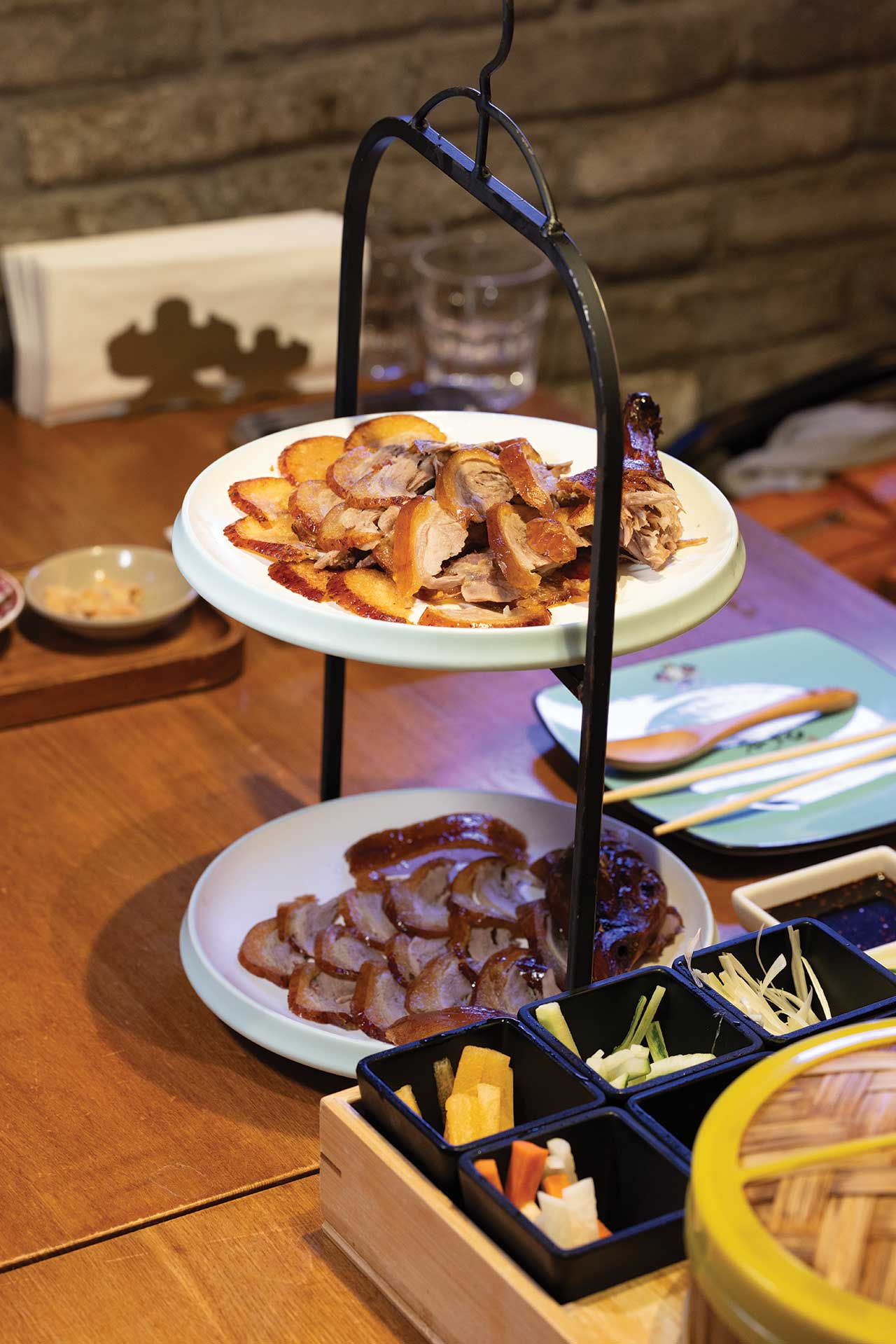
Tangram is home to both Asian- and American-born casual chains such as Kura Sushi and Xi’an Famous Foods, but my favorite stop is the more upmarket Juqi. Part of a chain of about 20 restaurants in Beijing, this is the place for crisp-skinned Peking duck that you eat with skinny, satiny pancakes. A friendly server shows me how to use my chopsticks to wrap the juicy fowl with cucumber and scallions.
The showy appetizers—including mashed potatoes molded into the shape of a rabbit—and desserts are worth your money, too. I’m partial to the almond pudding, contained in a white chocolate shell that resembles a peach.
Peking duck, with its long and storied culinary history, presented in the basement of a bustling mall, is an appropriate way to cap off a visit to Flushing. In this urban neighborhood, Chinese traditions are packed together in an accessible collection of vibrant eateries, making for a mighty tasty budget vacation.
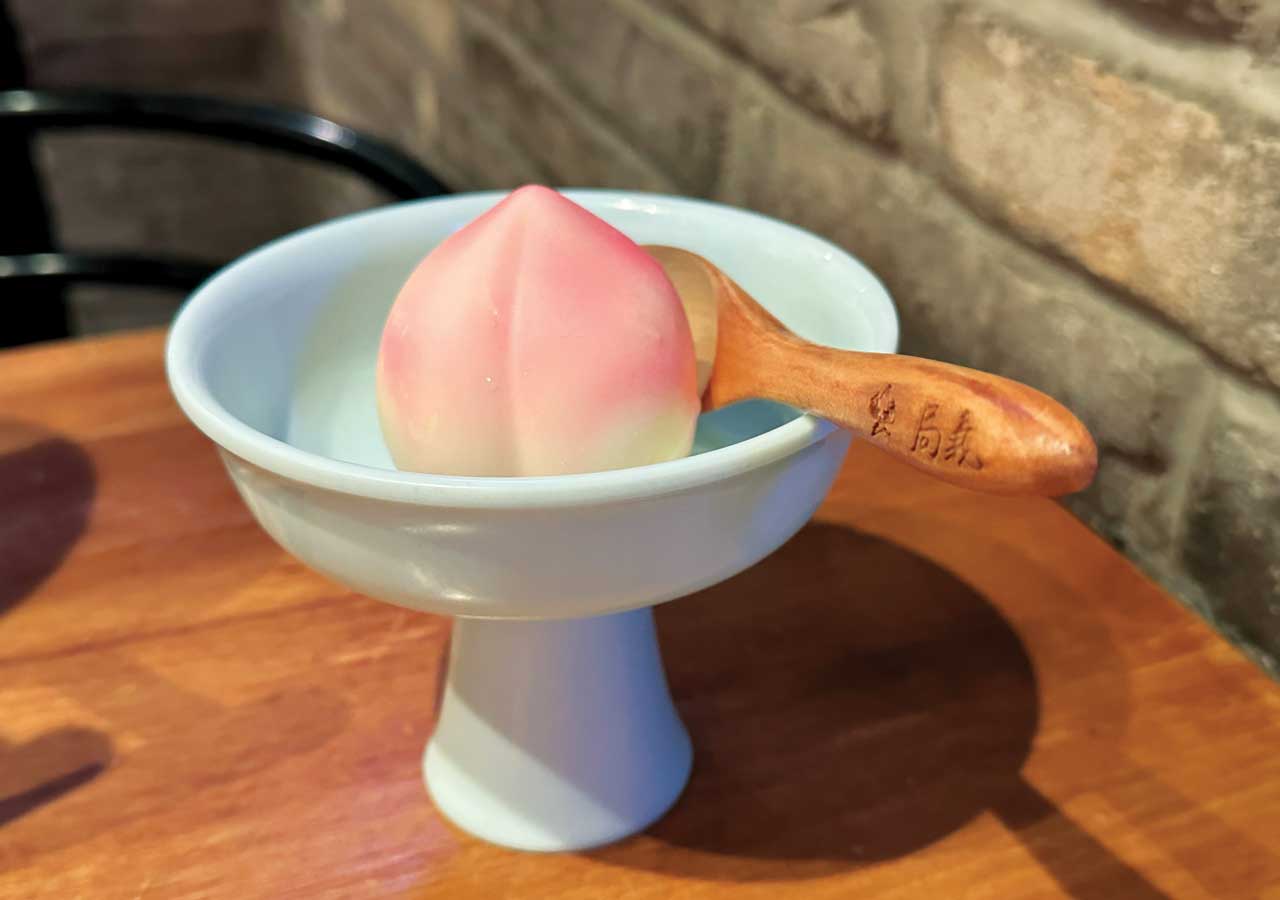
Where to Eat, Drink & Stay
He Nan Mian Guan (136-31 41st Ave.) is open from 6:30 a.m. to 9 p.m. daily. The close-knit family that runs it may not pay much attention to the ambience (wait to use the restroom elsewhere), but even in China, I’ve never seen such beautiful noodles produced so quickly.
At Jiu Hao (34-40 Union St.), ordering Dongbei-style barbecue (cooked at your cozy booth) is easy for anglophones, thanks to a tablet complete with pictures. Don’t miss the high-quality marinated beef.
Inside Tangram mall, cool down with a sip at Sing Choi Kee (133-36 37th Ave.), a Hong Kong-style cafe. Its specialty is large teddy-bear-shaped ice cubes that melt into your drink, adding flavor. I like the grapefruit soda crowned with a strawberry-flavored bear.
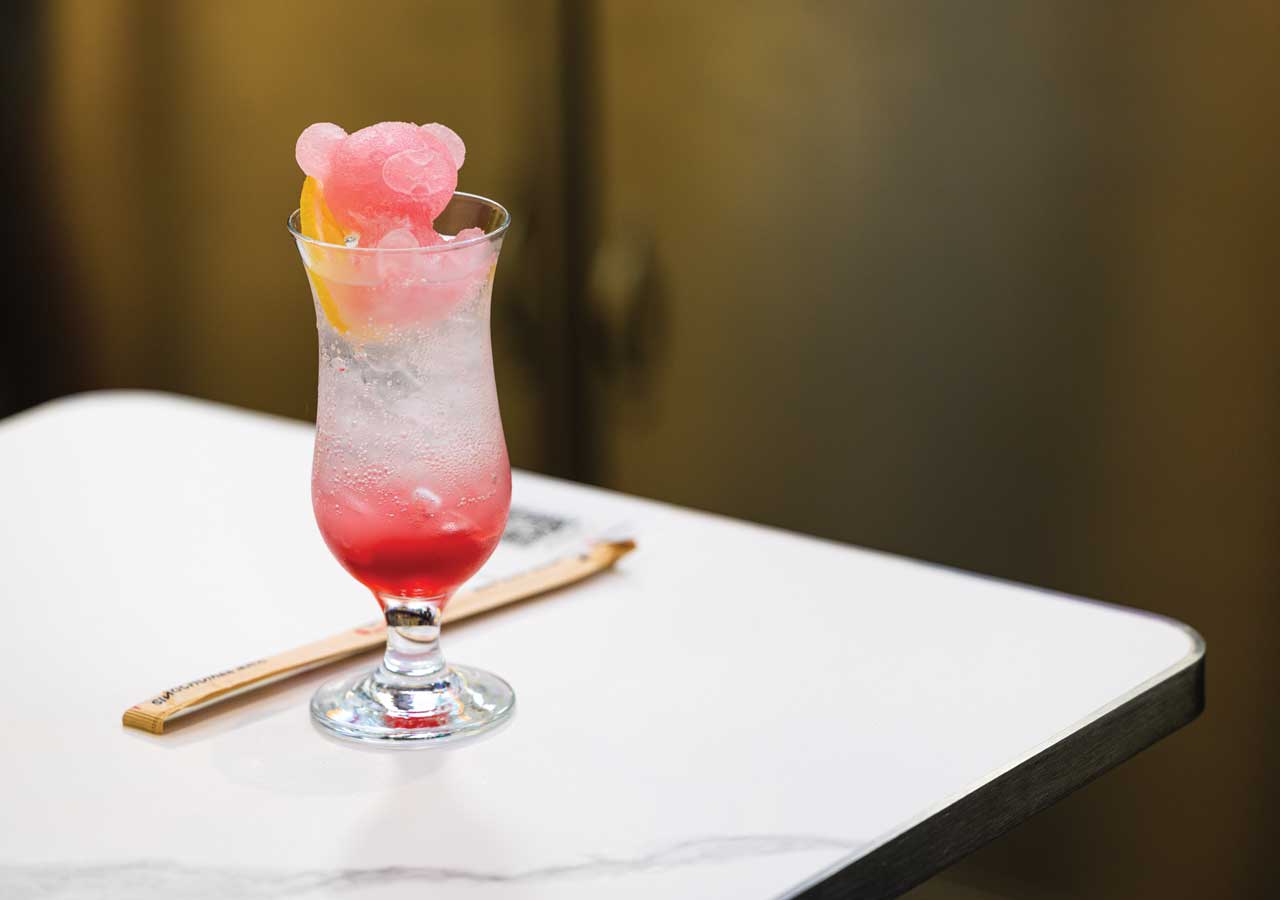
No Chinese food crawl is complete without bites from the northwesternmost region of Xinjiang. Halal Uyghur cuisine fuses various influences from across the Silk Road. I satisfied a craving for spicy lamb kebabs and thin-skinned pumpkin dumplings at New Nurlan Uyghur Restaurant (135-51 39th Ave.), in the lower level of the Best Western Queens Court Hotel.

At Asian Jewels Seafood Restaurant (133-30 39th Ave.), dim sum carts barrel by with convivial force. Most of the staff speak some English and are happy to discuss their fare, which includes usual suspects such as flaky pork pies and coral-like fried taro filled with shrimp and pork.
Before you hop back on the train, grab a scoop or two at Sundaes Best (136-17 39th Ave.) inside The Food Hall at Queens Crossing. You’ll find sorbets and gelati in Asian-inspired flavors such as Jeju mandarin, calamansi, and matcha dotted with Japanese Kit Kats.
The Asiatic Hotel is conveniently located in Flushing’s Chinatown. The hotel offers rooms with queen and double beds and provides complimentary Wi-Fi and breakfast.
Just up 37th Ave., rest in the lap of luxury at the Renaissance New York Flushing Hotel at Tangram, a newer lodging that stretches above the Tangram mall. Standard king rooms are an impressive 245 square feet, and all rooms are stocked with Aveda shampoo and soap. A rooftop bar offers views of all the action of the neighborhood.
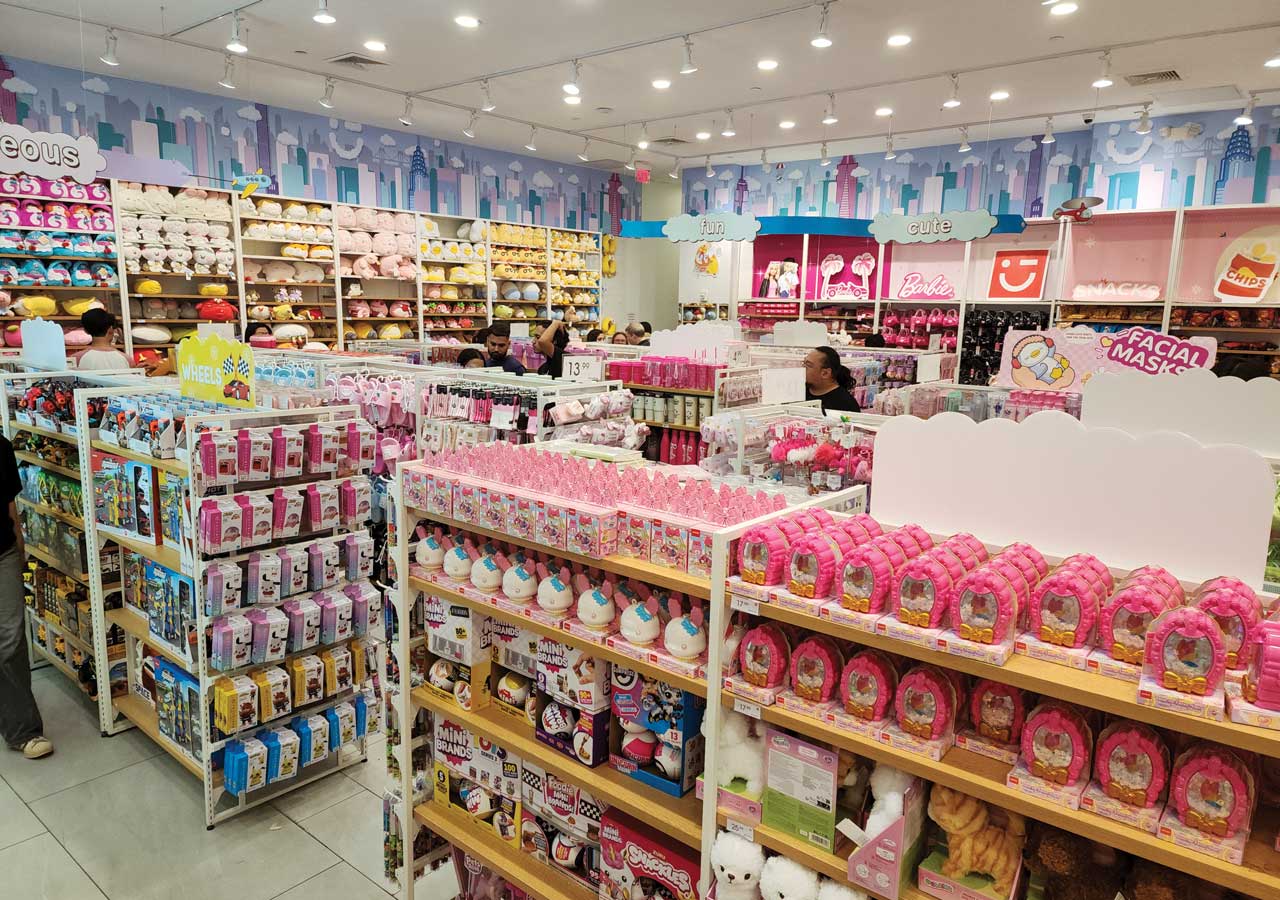
Where to Shop & Explore
Pick up edible gifts and hard-to-find food items at the neighborhood’s many Asian markets. The best of them is the expansive J Market inside New World Mall (136-20 Roosevelt Ave.) At Tangram mall (133-33 39th Ave.), retailers selling Japanese cosmetics, housewares, anime plushies and collectibles share space with a cat café, badminton pro shop and a boutique specializing in Korean streetwear.

About a mile’s walk from downtown, Flushing Meadows Corona Park has been the location of two World’s Fairs. Buildings constructed for those events now hold attractions that include the Queens Botanical Garden, the Queens Museum and the New York Hall of Science. My favorite museum of all is nearby in Corona. The Louis Armstrong House Museum (34-56 107th St.) lovingly preserves the home of the jazz legend, Technicolor kitchen and all.
Alice Levitt is a food and travel writer based in Northern Virginia.
